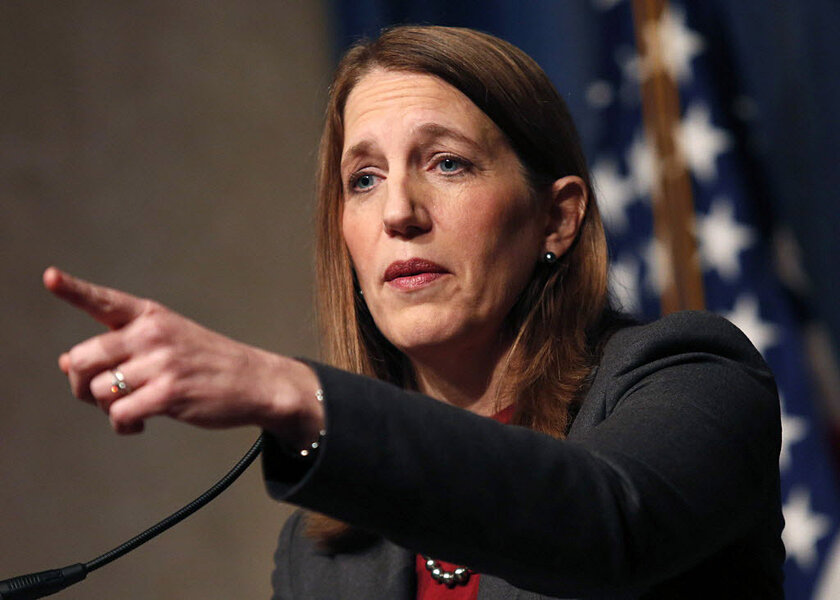Five things Americans still don’t understand about Obamacare
Loading...
Five years after President Obama signed the Affordable Care Act into law, many Americans still misunderstand key aspects of the landmark legislation and the impact it has had on the health insurance marketplace, a new poll shows.
While a majority of Americans – 60 percent – correctly assume that more Americans have been able to secure health insurance since the passage of the Affordable Care Act, misconceptions remain about who qualifies for subsidies and how much they are costing the federal government, according to a survey of 1,067 US adults conducted by PerryUndem Research/Communication for Vox Media.
Some 57 percent of respondents reported that they did not have enough information to sufficiently understand the law. That, in itself, is unsurprising. Americans' confusion with the individual policies of the ACA have been well-documented. For example, a Kaiser Family Foundation survey released in March found that just over half of respondents were aware that the penalty for not purchasing health insurance takes effect this year. Two in 10 respondents thought it would go into effect in 2016, while one in 10 thought the penalty was rolled out last year – and about one in 6 respondents said they didn't know when the penalty would take effect.
"Taken overall, the poll paints a frustrating picture for Democrats: most Americans aren't changing their opinion; those who are have mostly become more negative; and some widely held beliefs about the Affordable Care Act are far from accurate," wrote Sarah Kliff of Vox. "But it's not all good news for Republicans, either: though most Americans dislike Obamacare, more want to see it improved than repealed."
Here are five misconceptions that persist:
No. 1: Obamacare has driven up premiums higher than they would have gone without a federal mandate.
An overwhelming majority of Americans – 82 percent – either say the price tag for health care has gone up, or that they aren't sure, when the price of premiums has actually decreased compared to initial estimates, according to the Vox poll.
There is some truth in this particular misconception. Some 65 percent of existing plans have in fact been rising, with a median increase of 4 percent, according to analysis of emerging trends in health care exchanges conducted by the McKinsey Center for US Heath System Reform.
However, the increase seen under Obamacare is minimal compared with the sharp increases seen in health-care premium costs in the years prior to the implementation of Obamacare, suggests Rick Ungar, a left-leaning blogger for Forbes.
“When was the last time we saw insurance premiums experience an annual increase of less than 5 percent? I cannot remember such a time and doubt that you can either,” Mr. Ungar wrote in October.
No. 2: Businesses are cutting employee hours to avoid having to pay for health coverage.
More than half of all Americans, 54 percent, or 74 percent of Republicans and 42 percent of Democrats, think that businesses are cutting back on employee hours to avoid the employer mandate to provide health insurance, the Vox poll shows. But Sarah Kliff of Vox points out that while this is happening in isolated circumstances, the phenomenon is not widespread. Moreover, experts say that such maneuvers could have legal consequences for the companies in question.
"Companies can legally cut a worker's hours if business conditions warrant such a move, but thanks to an often-overlooked section of a federal statute, if a court determines that a firm did so primarily to avoid responsibility for providing health benefits, they may be found in violation of the federal Employee Retirement Income Security Act of 1974, or ERISA," wrote Lauren Weber for the Wall Street Journal.
No. 3: The federal costs of Obamacare have exceeded original estimates.
Budget projections released early this month by the Congressional Budget Office and the congressional Committee on Taxation demonstrated that Obamacare would cost the federal government $1.2 trillion over the next decade, or 11 percent less than the CBO estimated earlier this year.
Moreover, the April report had already decreased by 7 percent, compared with a report released in April 2014, according to US News and World Report. The estimate in the 2014 report had been marked down by more than $100 billion from original estimates, Vox reported.
Despite the steady decline in cost projections, only 5 percent of respondents in the Vox poll knew that the price tag for Obamacare is less than was originally estimated. Forty-two percent said that the law has cost the federal government more than originally estimated.
No. 4: Undocumented immigrants qualify for health subsidies.
Only 20 percent of Americans know that undocumented immigrants cannot get financial help to pay for health insurance, according to the Vox poll. Fifty-five percent said that they were not sure, while 23 percent believed that undocumented immigrants could receive financial aid to pay for health insurance.
In fact, undocumented workers cannot purchase health care coverage through Obamacare marketplaces, even if they are using their own funds to do so.
No. 5: Not enough people have signed up for Obamacare to work.
In 2009 and 2010, one of the main concerns of lawmakers on both sides of the political aisle was that consumers wouldn’t sign up for coverage through the Affordable Care Act.
However, these predictions did not materialize. Last year, more than 7.1 million people signed up on federal or state exchanges, passing the administration’s enrollment goal four days prior to the deadline. And in 2015, around 9.5 million people had signed up for Obamacare or renewed their coverage 19 days before the enrollment deadline, Bloomberg reported.
Only 13 percent of respondents knew that Obamacare met its enrollment goals.






